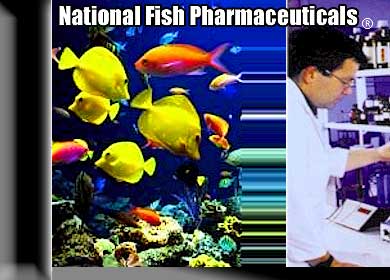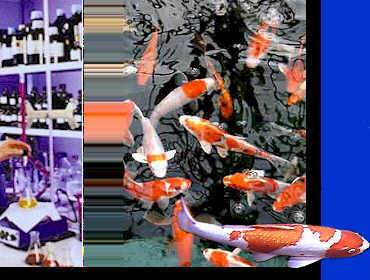|
|
Changes in Fish Color
|
Symptoms
|
|
Cause
|
|
Treatment and Links
|
| A). The fish's colors fade, they appear
light |
 |
Is the lighting too bright? |
 |
Provide shady spots in the aquarium. |
 |
|
 |
|
|
| |
|
Is the chemical composition of the water
suitable for the fish? Could the pH be wrong? |
 |
Do a partial water change and monitor the pH
with a chemical test kit or a
pH pen. |
 |
|
|
| Was any medication, fertilizer or other
substance added to the water? |
 |
Observe the fish, change the water if their
condition deteriorates. |
 |
|
|
| Have the fish been fed strictly with the same
feed for long periods? Is the food old or stale? |
 |
This can lead to deficiency symptoms, try to
vary the diet as much as possible. |
| The coloration of
a fish often reflects it's state of health. Pay attention
to hygiene, water quality and diet. |
| B). The mouth parts of one or more
fish take on a color ranging from reddish to deep red |
 |
These are harmless hemorrhages that often occur
after intensive cleaning of the spawning site or after mouth
fights. |
 |
Normally, no treatment is necessary. In
severe cases, isolate the fish in a quarantine tank and treat
with
Methylene Blue
or
Forma-Green. |
 |
|
|
| C). Does the whole body turn black? |
|
The fish may have a thyroid tumor |
|
See Physical
Changes page, Part B). |
 |
|
|
| D). The skin of the fish turns deep
black in closely adjacent areas. These areas thicken and
the scales stand out |
|
The fish is affected with Melanosarcoma, a
malignant growth |
 |
No suitable treatment known. Sacrifice the
fish humanely. |
 |
|
 |
|
|
| E). One or more of the fish are
continually dark, ranging to black. They stand apart from
the others and do not feed anymore. A slight bloating is
often apparent |
 |
The fish are probably affected with a flagellate
infection of the gut |
 |
Treat with
Metronidazole -or-
Paracide-D. |
| |
|
Home
ı
Articles ı
Prevention ı
Fish
Diseases ı
About Us ı
Contact Us ı
Terms of Use ı
Privacy Policy ı
Shipping ı
Products |

